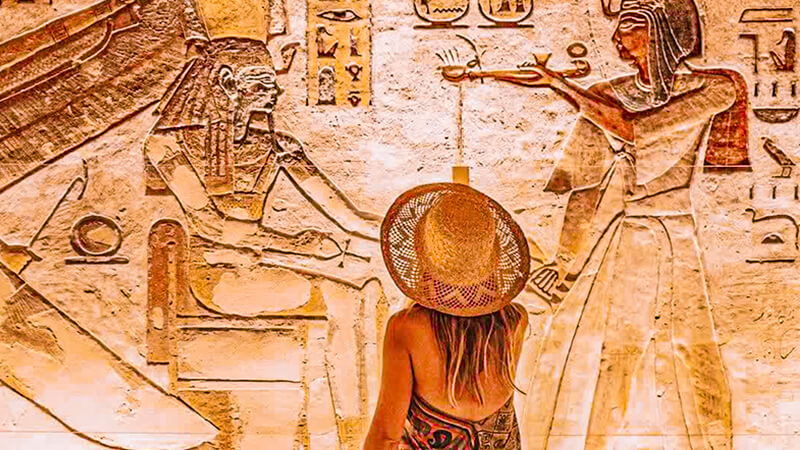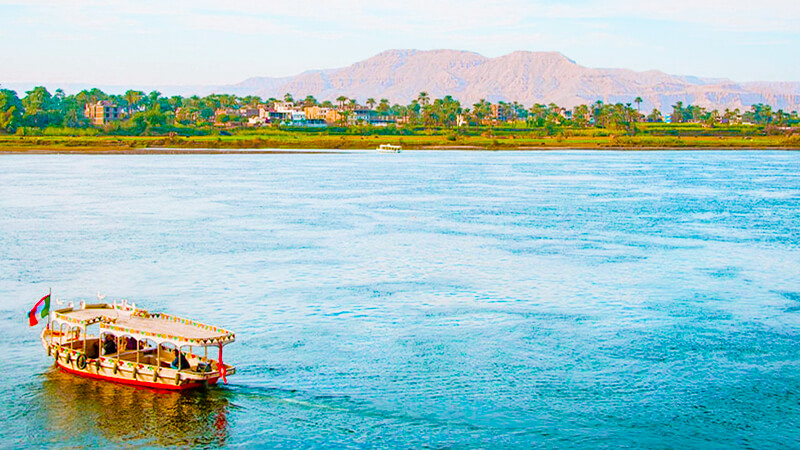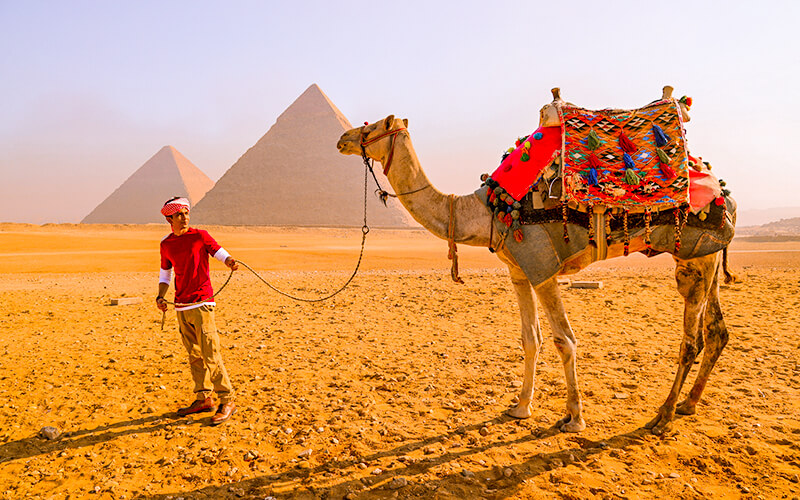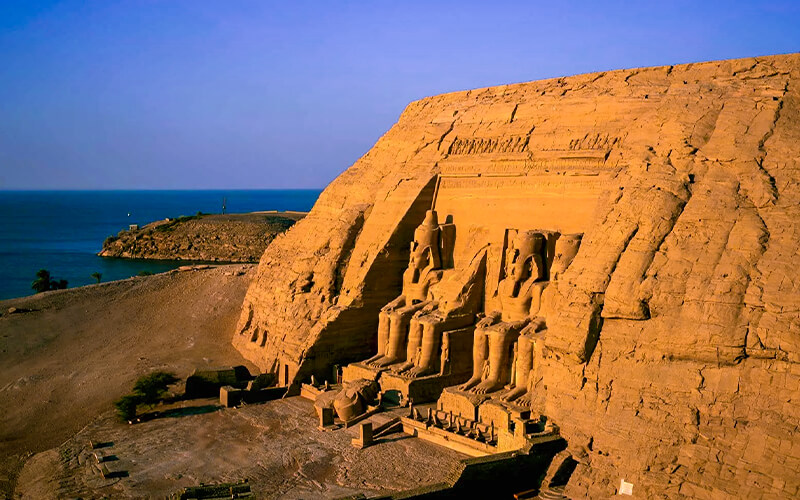25 Facts about ancient Egypt
You’ll see why as we go through these most Top Facts about ancient Egypt! It’s a land of myths and legends, ancient civilizations, and The Pyramids of Giza. Egypt is an exciting country to visit with some of the most fascinating historical places on the planet. There is so much more to Egypt than just the pyramids.
Egypt is fascinating because it is home to one of the world’s oldest civilizations. If you’re planning a trip to the Middle East, these Facts about ancient Egypt will help you learn about the ancient Egyptians and the history of some of the country’s most famous sights.
Egypt’s culture has always been one of the most admired. We may be talking about the most prosperous civilization in human history. It has been home to great thinkers and remarkable scientific, technical, and academic progress for centuries.
Egypt was the home of one of the world’s oldest and most influential cultures. It is in northeast Africa and is best known for its history of pharaohs, pyramids, the Great Sphinx, and the Nile River.
If you’re looking to spend a fantastic vacation in Egypt check out our Egypt Excursions with our qualified Egyptologist with the best Egypt travel guide in Egypt.
Here are some of the interesting Facts about Ancient Egypt you May, like to know:-

Facts about ancient Egypt
1- Egyptian history is generally considered to have begun in 3200 B.C. when King Menes (also called Narmer) united the Upper and Lower Kingdoms. The last native dynasty fell to the Persians in 341 B.C. and was replaced by Greeks, Romans, and Byzantines. The Arabs introduced Islam and Arabic into Egypt in the seventh century.
2- Thirty-one dynasties ruled it. During the 3,000 years that the history of Egypt lasted, a total of 31 dynasties came to power, understanding a dynasty as a series of rulers (family or not) who transferred power among themselves.
3- Egypt’s first pyramid was a step pyramid at Saqqara, built by the famed Egyptian architect Imhotep for the pharaoh Djoser in 2600 B.C.
4- All pyramids in Egypt, including those built on the Giza plateau, are situated on the west bank of the Nile River because that is where the sun sets every evening, symbolizing the realm of the dead.
5- The three pyramids in Giza Necropolis are the most famous Egyptian pyramids. Still, as many as about 140 pyramids in total have been discovered in the area of Ancient Egypt.
6- Contrary to popular belief, the pyramids were probably not built by enslaved people or prisoners but by regular paid workers.
7- The estimates of the number of workers involved in the construction of the pyramids differ significantly, but it might have been as many as 100,000 people.
8- Cats were considered sacred animals in Ancient Egypt. related to the goddess Bastiat.
9- They made papyrus paper from a tall reed plant called Papyrus. The Egyptians would use strips of the inner stem of the plant to make paper. They would make two layers of stripes, one horizontal and the other vertical. Then they would cover it in a linen cloth and apply pressure with a mallet or stones. The strips would bind together over time, making a single flat sheet to write on.
10- Because it was so hot in Egypt, most people wore white linen clothes. Men wore kilts, and women wore straight dresses. Enslaved people and servants would wear patterned fabrics.
11- Ancient Egyptian women had more rights and privileges than most women in the ancient world. For example, they could own property, carry out business deals, and initiate divorce, and women from wealthy families could become doctors or priestesses.
12- Women ruled Egypt with as much power as men: Although Cleopatra’s most famous queen, there were other women with more power. The most famous example is the fabulous Hatshepsut, daughter of Thutmose I. Also noteworthy is the beautiful Nefertari, wife of Ramses II, of great intelligence and political vision; in fact, she ruled the country when her husband was away.

Nile River in Aswan City
13- The Great Pyramid of Giza is the only one of the 7 Wonders of the Ancient World still standing. There are many mysteries surrounding this immense construction, especially about how the more than 2 million stone blocks that make it up (each weighing more than 2 tons) could be placed at that time. An extra curiosity: the three pyramids of Giza are aligned with Orion’s belt.
14- Garbage Covered Tutankhamun’s Tomb: Tutankhamun’s riches reached us undamaged for a remarkable reason. When Ramses IV’s tomb was erected, the garbage was dumped at Tutankhamun’s entrance. Looters missed it, allowing Howard Carter to enter the tomb and retrieve the unbroken entrance door seal.
15- Egypt’s Nile is the world’s longest river, running 4,135 miles (6,670 km). Ancient Egyptians would measure the depth of the Nile using a “nilometer.” The English word “Nile” is derived from the Semitic Nahal, meaning “river.” The Ancient Egyptians called the river iteru, meaning “great river.”
16- The Nile flows from south to north; it is infrequent for a riverbed to flow north. The Nile is the most striking case of this phenomenon, which all the guides highlight as something extraordinary. Well, it’s unusual but not unique. Other examples are the Rhine and the Elbe.
17- The pyramids and temples of Egypt are the works that get all the attention in Egypt. But we must remember that between 1859 and 1869, a mega-construction changed international markets forever: we are talking about the Suez Canal, which joins the Mediterranean Sea and the Red Sea.
18- The meaning of the word “hieroglyph”? It comes from Greek, and its translation is “sacred engravings.”
19- The Ansa cross and the scarab are two symbols you will constantly find in the African country. The first, also known as the Ankh, is a hieroglyph that means “life.” They also call it “the key of life.” The Scarab is one of the sacred animals of ancient Egypt and represents the resurrection and eternal life.
20- The flag of Egypt has three horizontal lines with these colors: red represents the sacrifices and blood of Egyptian martyrs, white symbolizes peace, black stands for the dark period of occupation, and the eagle represents strength and power.
21- The gods were represented with animal heads and a man’s or woman’s bodies. For example, Sobek, the God of the Nile, had the head of a crocodile, and Horus, God of the Sun, had the head of a falcon.
22- Egypt’s Borders Two Seas Egypt is located in a strategic location between the Mediterranean Sea and the Red Sea. The Suez Canal connects the two seas, allowing ships to sail between Asia and Europe easily. Egypt has been a very strategic location for centuries.
23- Egypt is home to one of the world’s largest dams. The Aswan High Dam is the world’s largest embankment dam, spanning the Nile, separating Egypt from Sudan and creating Lake Nassar. Lake Nassar is one of the world’s largest reservoirs.
24- The tallest tower in the country is the Cairo Tower. It is 187 meters high and has an observatory that allows visitors to have beautiful views of the city.
25- Throughout the centuries, Egypt has been under the control of the Roman Empire, the Greek Ptolemaic Kingdom, Muslim forces, and even the English.
Don’t miss to check out our Egypt Vacation Packages to spend a fantastic time in Egypt.



